In honor of St. Patrick’s Day tomorrow, I thought I’d pot up a few Irishman’s cuttings. This is a super-easy plant propagation method that you can use to make more of some of your favorite perennials, and now is a good time to do it.
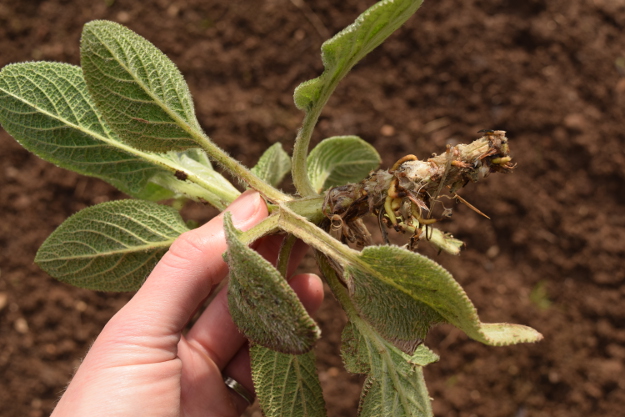
Irishman’s cuttings are simply cuttings that have a few roots on them already. They’re pretty foolproof compared to regular cuttings, because they have a head start. This is a fantastic drought-tolerant perennial, Stachys byzantina ‘Helen von Stein’, or big ears lamb’s ears. I’ll need to trim or carefully pull off some of those leaves—that’s a lot for those little roots to support.

This is Penstemon heterophyllus ‘Electric Blue’. I’ll need to cut back this one’s foliage, too. If you take Irishman’s cuttings in the summer, you may want to put a plastic bag over them to keep in the humidity. I learned the hard way last summer when I took a whole bunch of ‘Electric Blue’ cuttings and watched them die on my patio. They should be OK uncovered on the patio in cool spring weather, however.
‘Electric Blue’ penstemon is one of my favorite perennials; this is what it does in the summer. It’s short-lived, so taking cuttings every couple of years is a good idea.
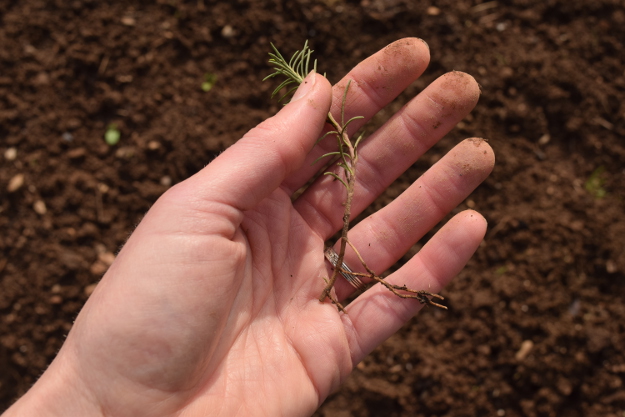
Several other penstemons are good for taking Irishman’s cuttings. This is Penstemon pinifolius, which has needle-like foliage like a conifer and tiny tubular orange flowers that hummingbirds love.
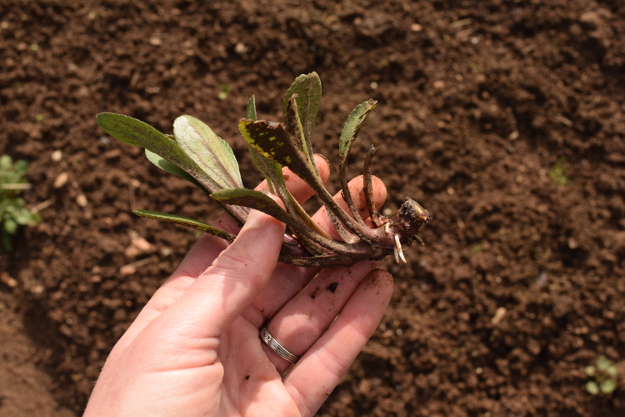
Shasta daisy (Leucanthemum ×superbum) looks like it’s raring to go.
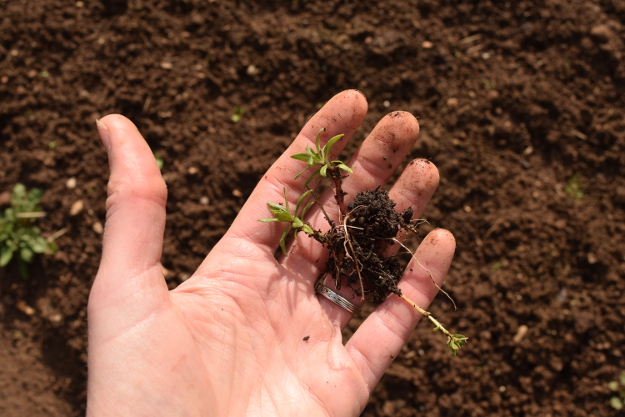
You may have to dig around in the soil to get some rooted pieces. This is another hummingbird magnet, California fuchsia (Zauschneria, a.k.a. Epilobium).

I found a few rooted stems around the edges of my purple sage (Salvia officinalis ‘Purpurascens’). I love this plant, and it’s not terribly long-lived, so taking cuttings is wise.
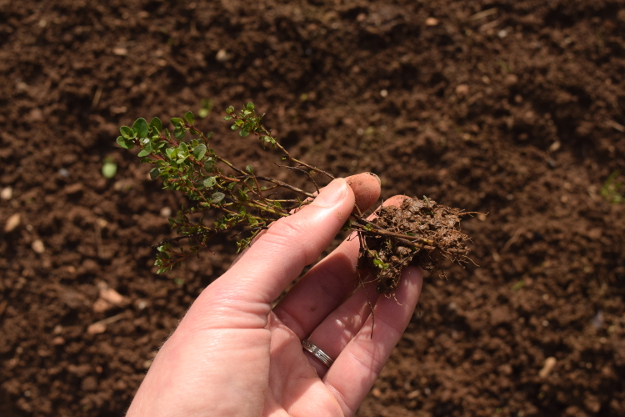
Many other herbs are amenable to this propagation method. This is culinary thyme. I have some ornamental thymes I plan to propagate this way as well.

I grow golden oregano as an ornamental. It greens out in the summer, but it’s radiant in the spring.

Some “Irishman’s cuttings” will have so many roots, they’re really more like divisions. I don’t care what you call them, as long as I can have more Acaena inermis ‘Purpurea’, please.

This is a purple form of Lysimachia congestiflora, which overwintered on the patio in our mild zone 9 winter this year. I can’t remember what variety it is, but hopefully it isn’t a patented one. If you read my post on patents, you know that it’s illegal to propagate patented plants via cuttings without a license, even for your own use.

Why are they called Irishman’s cuttings? I don’t know, and I better not hazard a guess. My Irish-American husband might read this. This is a particularly lovely Sempervivum that I got from my Irish-American friend, Patricia.

Isn’t it dreamy? I don’t know the variety.

Here’s Arenaria montana, a sweet little low spreader that is smothered in white flowers in spring.

Several sedums make good Irishman’s cuttings. Of course, they’re so easy to root that they don’t need a head start at all, but it doesn’t hurt. This is Sedum forsterianum.
A strangely uncommon sedum that I adore, Sedum anacampseros.
And our wonderful native Sedum oregonense.

Lastly, a new plant to me, Hutchinsia alpina, from my friend Evan.
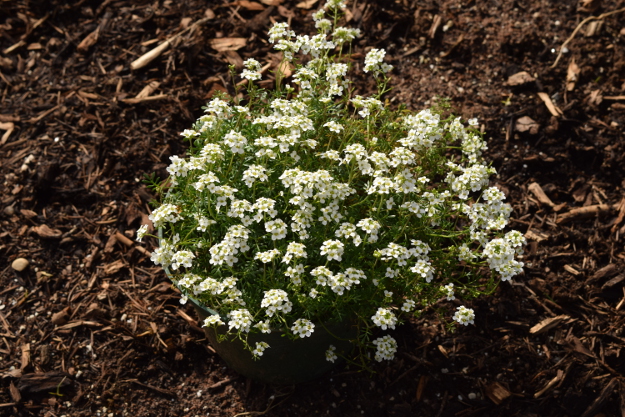
The hutchinsia he gave me last fall has been blooming for quite a while. Nice, huh?
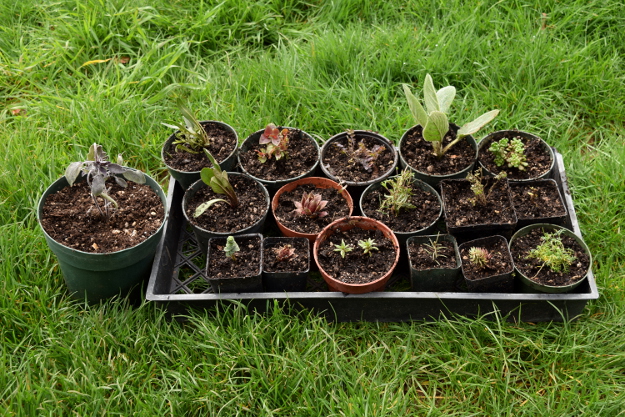
And here are my babies all potted up. I used some recycled pots and recycled potting mix, nothing fancy or ultra-sterile here. Don’t be afraid to cut your plants back like I did when you pot them, and trim them again after they flush out. It pains me to see straggly plants, when a quick chop at the right time (when they’re young) can make all the difference. Happy St. Patty’s Day and happy propagating!


So glad I saw this post, Amy! I want to take some cuttings from my Santolina, but am not sure how to do it. Not sure if I can find Irish cuttings on it, but I might just have to give it a try. Thanks for the lesson! 🙂
I haven’t tried those, but they’re supposed to be pretty easy from cuttings as along as you’re careful not to overwater them. Let me know how it works!
My garden is just waking up so taking cuttings isn’t a good idea right now but I will remember this for the future. 🙂 When I saw the title I thought potatoes might be involved.
I suspect you could use this technique at almost any time during the growing season if you gave the cuttings the proper aftercare (don’t let them dry out like I did last year). No potatoes just yet, though I did get some seed potatoes yesterday!